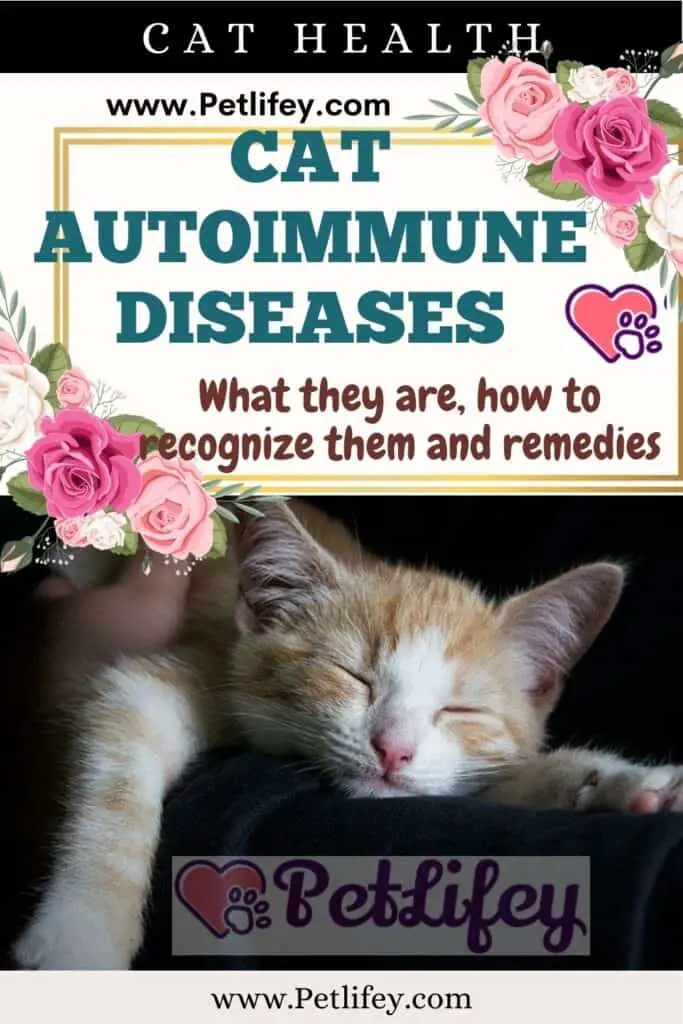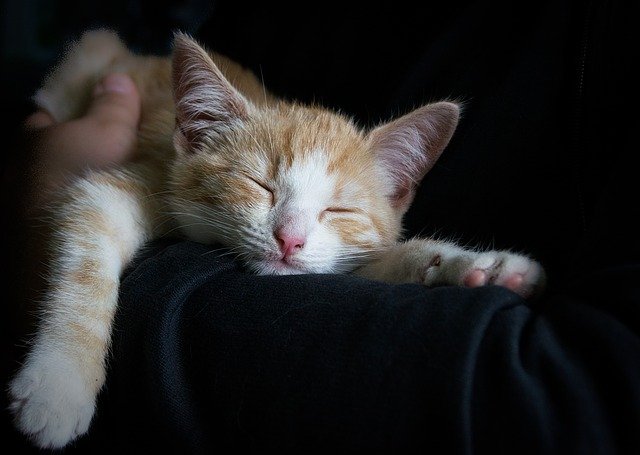What are they and what is meant by cat autoimmune diseases? Let’s see what are the symptoms to recognize them and what to do to keep them under control.

Before understanding what autoimmune diseases in cats can be, we will have to try to explain in simple words the very concept of ‘autoimmune disease’. Fortunately, there are treatments that can help the feline’s physique not to weaken too much; there are also some home remedies we can use to help our beloved pet kitty. Unfortunately, when he is ill, we are all suffering: this is why it is important to understand what he has and always keep an eye on his state of health.
What are autoimmune diseases: what happens to the body
For non-experts, autoimmune disease could be explained by an abnormal reaction of an individual’s immune system that ‘attacks’ healthy tissues and thereby causes disease.
When the immune system reacts badly it can attack everything from joints to skin to blood vessels. As far as humans are concerned, there are ten so far counted, although in many cases they are chronic disorders.
Fortunately, science has moved on with treatments and remedies that allow us and our pets to lead as ‘regular’ lives as possible. But on the triggering causes, experts still seem to waver.
Cat autoimmune diseases: which are the most frequent
As in humans, also in cats there may be an abnormal response of the immune system that does not recognize (or indeed recognizes as foreign) the healthy tissues of the body.
Often we tend to consider Fiv (Feline Immunodeficiency Virus) and Felv as autoimmune diseases, but in reality they are feline immunodeficiency infections. The most frequent ones in cats are instead two, namely:
- Pemphigus Foliaceus,
- Immune-Mediated Hemolytic Anemia (IMHA).
Pemphigus Foliaceus
The risk of pemphigus foliaceus in dogs is the same skin autoimmune disease that can also affect cats. The signs of this pathology are usually pustules on the dermis, due precisely to the detachment of epidermal keratinocytes.
In fact, Pemphigus generates evident pustules, blisters, ulcers and crusts, clearly visible not only on the feline’s muzzle but also on delicate areas such as the pads of the paws and the groin area.
IMHA
It is a disorder of the immune system or, which generates auto-antibodies that act against red blood cells and also in the bone marrow. It can be of two types: primary (idiopathic) and secondary.
It may be the effect resulting from: infectious diseases in cats, neoplasms, inflammations (such as pancreatitis , cystitis etc.). Unlike in dogs, in cats there seem to be no conditions that predispose to IMHA either at the level of breed or sex but it is advisable to carry out further research when the cat reaches the age of two up to about 6 years.
Autoimmune diseases in cats: causes and treatments

Unfortunately, just like in humans, autoimmune diseases in felines do not have a certain trigger : these are still little known and therefore not very ‘predictable’ reasons.
Some studies seem to show that there is a relationship between autoimmune disease and lifestyle: for this reason many experts also recommend a balanced diet and adequate for the therapy that the doctor will recommend. Other possible causes (although there are many doubts about this) are sometimes also counted: vaccines, insecticides and stress.
The most chosen treatment usually consists of steroids, whose action is to weaken the action of the immune system against healthy tissues and therefore also cortisone drugs and immunosuppressive products (which must be strictly prescribed by the trusted veterinarian). In this way it will not be possible to recover from the disease but at least its symptoms will be more ‘mild’ and bearable by the cat.
Since the use of steroids can create phenomena such as pancreatitis, a low-fat diet, constant weight control and controlled physical activity are always recommended .
Finally, for the diagnosis of autoimmune diseases in cats, we usually proceed with a biopsy regarding pustules and blisters of the skin, while for the others, whose symptoms are not clearly visible, with urine tests and blood tests.






